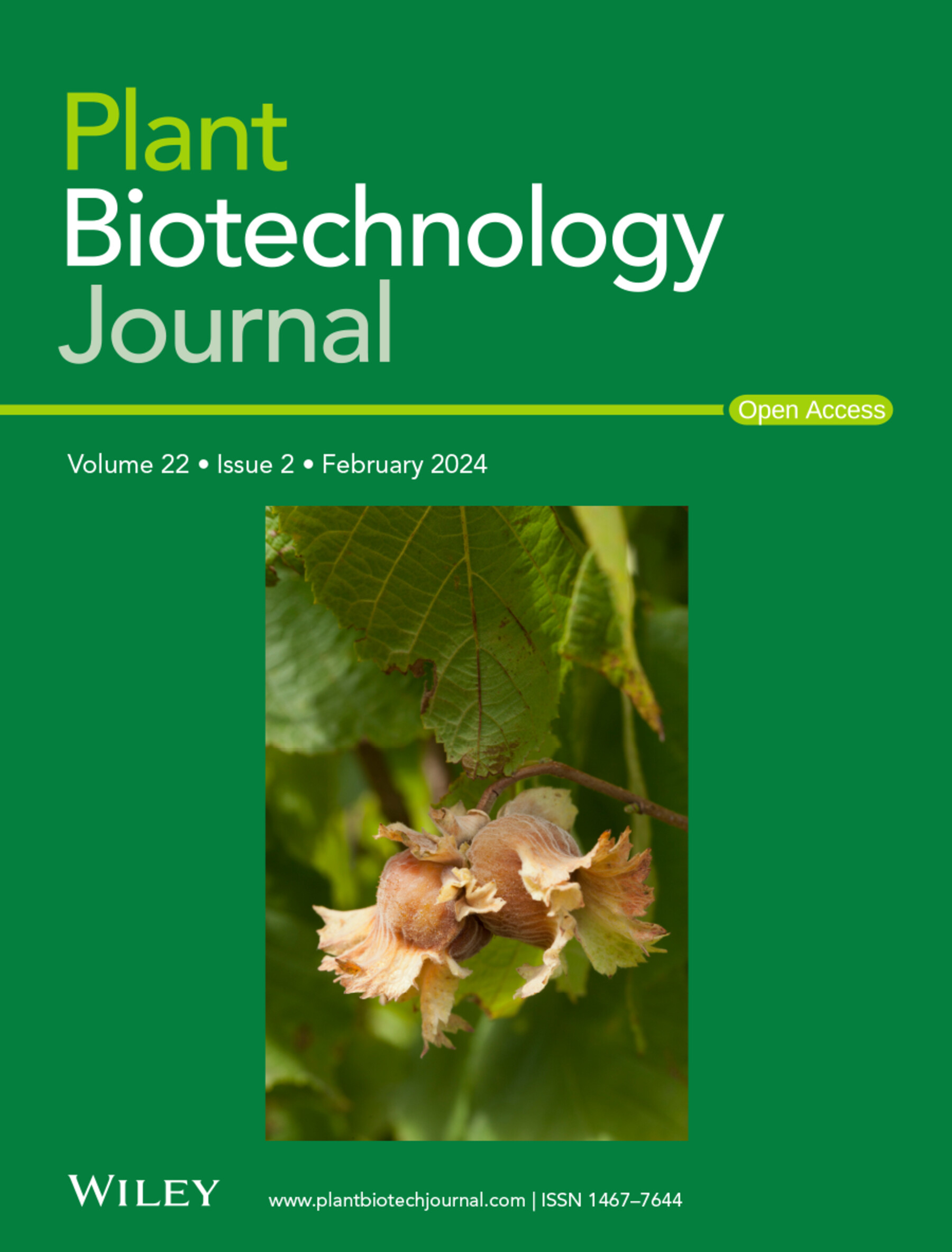The E3 ubiquitin ligase TaGW2 facilitates TaSnRK1γ and TaVPS24 degradation to enhance stripe rust susceptibility in wheat
IF 10.1
1区 生物学
Q1 BIOTECHNOLOGY & APPLIED MICROBIOLOGY
引用次数: 0
Abstract
Wheat stripe rust, caused by the fungal pathogen Puccinia striiformis f. sp. tritici (Pst), threatens global wheat production, and therefore discovering genes involved in stripe rust susceptibility is essential for balancing yield with disease resistance in sustainable breeding strategies. Although TaGW2 is well known to negatively regulate wheat kernel size and weight, its role in stress response remains unclear. Here, we found that TaGW2 transcription levels increased following inoculation with Pst or treatment with flg22 or chitin. TaGW2 knockdown lines showed enhanced resistance to multiple Pst races, while TaGW2 overexpression reduced host defence response, promoted Pst growth and development and increased wheat susceptibility to Pst. Additionally, TaGW2 could mediate the ubiquitination and degradation of both TaSnRK1γ and TaVPS24 via the 26S proteasome pathway. Silencing TaSnRK1γ or TaVPS24 in wheat increased sensitivity to Pst, whereas overexpressing either gene enhanced wheat defence response, indicating that TaSnRK1γ and TaVPS24 act as positive regulators of Pst resistance. This study reveals a previously unrecognized mechanism inhibiting plant immunity to Pst through TaGW2-mediated ubiquitination and degradation of TaSnRK1γ and TaVPS24. This work also provides crucial genetic resources for breeding high-yield, stripe rust-resistant wheat varieties.E3泛素连接酶TaGW2促进TaSnRK1γ和TaVPS24降解,增强小麦对条锈病的敏感性
小麦条锈病是由小麦条锈病真菌引起的,威胁着全球小麦生产,因此发现与条锈病易感性相关的基因对于在可持续育种策略中平衡产量和抗病性至关重要。虽然TaGW2负调控小麦籽粒大小和重量是众所周知的,但其在胁迫反应中的作用尚不清楚。在这里,我们发现接种Pst或用flg22或几丁质处理后,TaGW2的转录水平增加。TaGW2敲低系对多种Pst的抗性增强,而TaGW2过表达降低寄主防御反应,促进Pst生长发育,增加小麦对Pst的敏感性。此外,TaGW2可以通过26S蛋白酶体途径介导TaSnRK1γ和TaVPS24的泛素化和降解。沉默TaSnRK1γ或TaVPS24可增加小麦对Pst的敏感性,而过表达任一基因均可增强小麦的防御反应,表明TaSnRK1γ和TaVPS24是小麦抗Pst的正向调节因子。这项研究揭示了一个以前未被认识的机制,通过tagw2介导的泛素化和TaSnRK1γ和TaVPS24的降解来抑制植物对Pst的免疫。这项工作也为培育高产、抗条锈病的小麦品种提供了重要的遗传资源。
本文章由计算机程序翻译,如有差异,请以英文原文为准。
求助全文
约1分钟内获得全文
求助全文
来源期刊

Plant Biotechnology Journal
生物-生物工程与应用微生物
CiteScore
20.50
自引率
2.90%
发文量
201
审稿时长
1 months
期刊介绍:
Plant Biotechnology Journal aspires to publish original research and insightful reviews of high impact, authored by prominent researchers in applied plant science. The journal places a special emphasis on molecular plant sciences and their practical applications through plant biotechnology. Our goal is to establish a platform for showcasing significant advances in the field, encompassing curiosity-driven studies with potential applications, strategic research in plant biotechnology, scientific analysis of crucial issues for the beneficial utilization of plant sciences, and assessments of the performance of plant biotechnology products in practical applications.
 求助内容:
求助内容: 应助结果提醒方式:
应助结果提醒方式:


